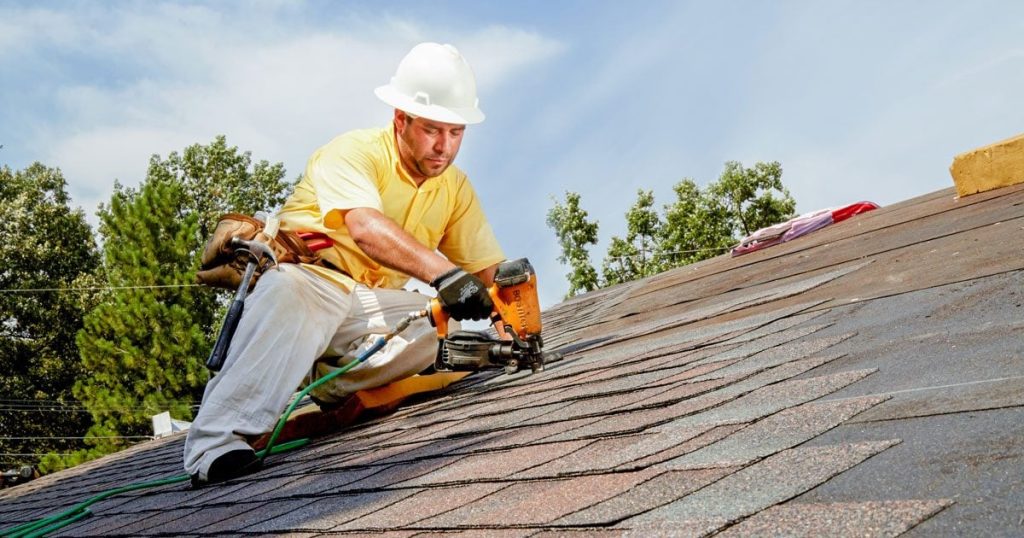A new roof is a major investment in your home’s longevity, offering essential protection, boosting curb appeal, and increasing property value. For homeowners, knowing what to expect and understanding the installation process can make all the difference in ensuring a seamless and successful roofing project. This guide will cover the key steps and considerations involved in installing a new roof in Sandy.
Assessing Your Needs
Evaluate Your Current Roof
Before installing a new roof, start by evaluating the condition of your current one. Check for signs of wear, damage, or potential leaks. This thorough assessment will help you determine whether a full replacement is needed or if repairs will be enough to restore its integrity.
Choosing the Right Materials
The roofing materials you choose can significantly impact the cost, longevity, and overall look of your roof. With weather conditions varying widely, it’s essential to select materials that not only complement your aesthetic preferences but also endure the challenges of your local climate.
Planning and Preparation
Hiring a Professional Contractor
Selecting a skilled and trustworthy contractor is essential for a successful roof installation. Look for someone who is licensed, insured, and backed by a solid reputation. A reliable contractor should provide references and a comprehensive, transparent quote, ensuring you have all the information needed to make an informed decision.
Securing Permits
In most areas, obtaining permits is a necessary step for new roof installations. A reliable contractor will manage this process for you, ensuring all work adheres to local building codes and regulations.
The Installation Process
Removing the Old Roof
The installation of your new roof begins with the essential process of removing the old one. This step involves carefully stripping away the existing shingles, underlayment, and, if necessary, the underlying decking. Equally important is the proper disposal of these materials, ensuring a clean and efficient start to your roofing project.
Preparing the Roof Deck
After removing the old roof, carefully inspect the underlying deck for any signs of damage. Issues such as rot or structural weaknesses must be resolved before moving forward. Addressing these problems at this stage is essential to ensure the durability and longevity of your new roof.
Installing Underlayment
Underlayment is a protective barrier placed directly on your roof deck, designed to resist water and provide an additional layer of defense. Installed beneath all other roofing materials, it serves as a crucial safeguard against harsh weather conditions, particularly in regions with unpredictable climates.
Placing New Roofing Material
The next stage is installing the new roofing material. Whether it’s asphalt shingles, tiles, or metal, each type demands precise installation techniques to ensure lasting durability and performance. A skilled contractor will follow industry best practices to properly lay the materials, guaranteeing a secure and effective roof.
Final Touches
Installing Additional Features
Drip edges, ridge vents, and flashing are installed after the primary roofing material and play a vital role in maintaining a roof’s health and performance. These components ensure effective water management and proper ventilation, both essential for longevity and efficiency.
Cleanup and Final Inspection
Once the installation is complete, a detailed cleanup should follow to eliminate any remaining debris, nails, or materials. A final inspection by the contractor then ensures the work meets the highest standards and complies with all local regulations.
Maintenance Tips
Regular Inspections
Even a brand-new roof needs regular inspections to stay in excellent condition. Aim to schedule inspections at least twice a year, as well as after severe storms, to identify and resolve potential issues before they become bigger problems.
Prompt Repairs
Identifying damage during an inspection makes prompt repairs essential. Addressing minor issues early prevents them from escalating into costly, more serious problems.
Conclusion
Installing a new roof is a significant yet essential investment for any homeowner. By familiarizing yourself with the process, selecting the right materials and contractor, and committing to regular maintenance, you can ensure your roof remains durable for years to come. A well-installed roof not only enhances the safety and comfort of your home but also adds to its overall aesthetic appeal.
When considering a new roof installation, it’s crucial to choose the right materials and professionals for the job. A well-installed roof not only enhances the aesthetic appeal of your home but also ensures long-term durability and protection against the elements. Understanding the various roofing options and their benefits can help you make an informed decision. For those looking to delve deeper into the intricacies of roofing installations and explore expert advice, you can Read more to gain valuable insights and tips that will guide you through the process seamlessly.
When considering a new roof installation, it’s crucial to choose a reliable contractor who understands local weather conditions and building codes. For residents in Orange City, FL, finding a skilled professional can make all the difference in ensuring a durable and efficient roofing system. A local expert will not only provide quality materials but also offer insights into the best roofing practices suited for the area. This attention to detail helps in extending the lifespan of your roof, ultimately saving you time and money on future repairs. Always ensure that your chosen contractor is licensed and insured to guarantee a smooth and successful installation process.

